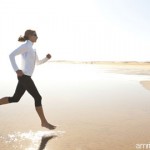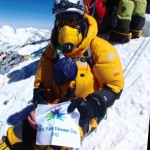As the date of the marathon approaches, she plans on increasing the length of her run, building up to 20 or 22 miles. But several weeks before the race, she’ll cut back several miles to avoid unnecessarily stressing her body. If people can run 22 miles, she says, they can usually run 26 miles with success.
Merrell has no fantasies about winning the race. Her goal is much more realistic and achievable. “I’d be happy if I finished anywhere under four hours,” she says, adding that her sister will also compete in the same marathon.
Meanwhile, adopting proper nutrition and hydration habits is especially important. When running for relaxation, she explains that she doesn’t always need a fuel belt with water and other sports drinks like Gatorade, to replace fluids and electrolytes. But during training, when she is running harder and faster, hydration is critical.
“When on my long runs, I had to to teach myself to drink somewhere around eight to 10 ounces at a minimum every hour,” she says. “It’s also recommended to take some sort of fuel, whether it’s like GU or PowerBar gel packs.”
Into the Future
Years from now, Merrell still hopes to be running and competing in at least one special race each year. She has her heart and hopes set on destination marathons, like the Paris Marathon.
In the meantime, she says running helps her maintain balance in her life, both at work and home.
“It clears my head, allows me to focus on my work so I can be more effective in treating my patients,” she says, adding that she is now training her six-year-old son to enjoy sports, including surfing and mountain biking. “Since I encourage my patients to exercise, I like to practice what I preach.”
Merrell believes that running is much more about the overall positive experience, and much less about winning or losing.
“I wasn’t able to run for many years,” she says. “Now that my arthritis is under control, this is a big deal for me. “If you’re going to get into running, you have do it for your own enjoyment and set reasonable goals.”
Her race is already off to a great start. Consider that in 2012, more than 140,000 people completed applications for approximately 40,000 spots in the New York marathon. Since Merrell earned her right to compete and currently has the upper hand with her arthritis, many would believe that she has already crossed the finish line.

